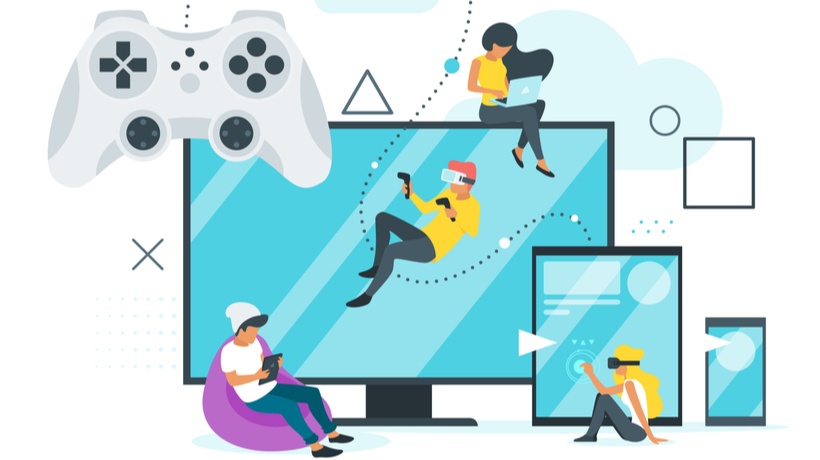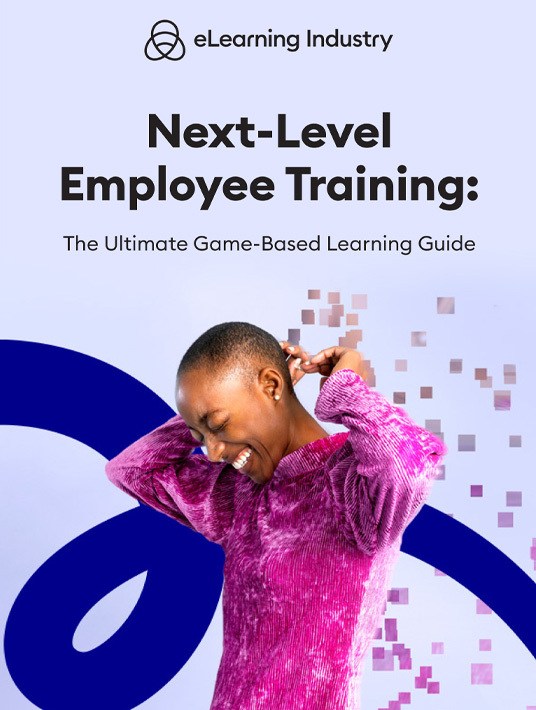
Top Myths And Truths About Training Games
Many organizations avoid serious games because they assume they’re too costly to implement or that they detract from the training objectives. They’ve bought into the misconceptions of game-based learning and can’t justify the investment. What they don’t know is that these myths rob them of all the GBL benefits, from improved compliance to reduced seat time. There’s no time like the present to reveal the realities behind them and explore how training games can benefit your company’s bottom line. Not to mention, boost employee participation, measure performance, and identify hidden gaps.

eBook Release
Next-Level Employee Training: The Ultimate Game-Based Learning Guide
This guide covers all of the game-based learning essentials to enhance your employee training program!
7 Misconceptions About Training Games And Their Realities
1. It’s All Fun And Games
Training games are only meant to entertain, not enlighten. And your organization doesn’t have the resources for training tools that are merely “enjoyable.” This myth goes against the entire concept of serious games, which are designed to improve or reinforce behaviors, as well as build essential work-related skills. Game-based learning is engaging, but its primary function is to offer employees support and bridge vital gaps. Granted, this misconception is probably rooted in the ineffective design of game developers who didn’t know how to balance frivolity with facts to achieve the goals and keep learners fully engaged.
2. Game Mechanics Become A Distraction
Employees are so busy trying to earn badges or advance to the next level that they forget about training objectives. This misconception contains a bit of truth for the simple fact that every gamification element must align with your outcomes and desired behaviors. Otherwise, you run the risk of reward-focused gaming experiences that miss the target. Rules, mechanics, and incentives should all be simple and straightforward. Nothing overly complex to distract learners from the finish line and the objectives that come with it.
3. No Way To Track Employee Performance
There’s no means to track employee progress, proficiency, or performance throughout the game. After all, it’s not a traditional online training course with exams and other quantitative diagnostic tools. However, training games do have built-in metrics even if they’re an experiential learning tool. You can still provide feedback, collect learner data, and highlight areas for improvement, as well as spot patterns in performance behaviors that must be addressed in future training activities. There is a caveat: you need the right LMS. A system that allows you to track game-based learning and features customizable data visualizations.
4. You Need To Be A Game Design Expert
Don’t you need a degree in graphic design and game development to create training games? Virtually anyone can develop GBL content with the right tools and experience, especially if they invest in rapid authoring software with built-in templates and assets. Creativity, an eye for aesthetics, and SME know-how don’t hurt, either. You can also choose to outsource the project to reduce development time and costs.
5. Gamification And Game-Based Learning Are The Same
This is the biggest training games misconception making the rounds today. Gamification and game-based learning are similar, in that they both deal with rewards, mechanics, and motivation. However, they are two distinct approaches to online training. Gamification involves incentives and gaming elements that are integrated into your course design, while GBL is all about serious games that support skill development and gap-bridging. The latter is a more targeted approach that doesn’t follow the traditional course format. Fortunately, you can combine both to reward your learners for a job well done and provide JIT support. The key is knowing the limitations of both and finding the best application for each in your online training strategy.
6. GBL Is A Standalone Training Tool
You can just throw in some serious games and call it day, right? They make the perfect standalone training tool for your team. The truth is that game-based learning is part of a balanced breakfast. You still need a solid framework to improve knowledge retention and avoid employee confusion. For example, you can’t simply throw them into a training game without any context or pre-existing knowledge. What are the goals and desired outcomes? Which skills or information do they need to complete the task? Which resources can they use to bridge gaps they disclose during the game? GBL is not an isolated incident that magically reveals all their pain points and triggers a training epiphany. It’s just one part of the puzzle.
7. It’s Too Expensive For SMBs
Many SMBs assume that training games are too costly for their budget—that it’s out of their price range. In reality, any organization can implement game-based learning if they know how to stretch resources. Repurpose assets, outsourcing certain tasks, or invest in rapid authoring tools with impressive asset repositories. These are just a few ways to cut costs and make GBL feasible with limited resources. You can also prioritize training gaps and only develop serious games for the most pressing issues. For instance, LMS metrics reveal that most of your employees lack interpersonal skills. So, create training games that build related competencies, such as active listening and empathy. Then expand your game library as you free up more room in your training budget.
Conclusion
How dangerous can misconceptions truly be? Subscribing to any of these myths has the power to hinder business growth and employee development. Your bottom line might even take a hit. Game-based learning enhances immersion and facilitates practical application. Employees get actively involved in training and learn from their mistakes. That said, you should avoid common pitfalls to eliminate in-game distractions and focus on the objectives. For example, omit characters with extensive backstories or overly complex challenges that apply too much pressure.
An eLearning content provider can help you dispel these myths and reap the rewards of game-based learning. Find the best outsourcing partner in our online directory. Filter results by industry, specialization, and solutions to choose a vendor that’s just right for your organization.
Download our eBook Next-Level Employee Training: The Ultimate Game-Based Learning Guide to target specific goals, challenges, and key takeaways with a GBL strategy.
